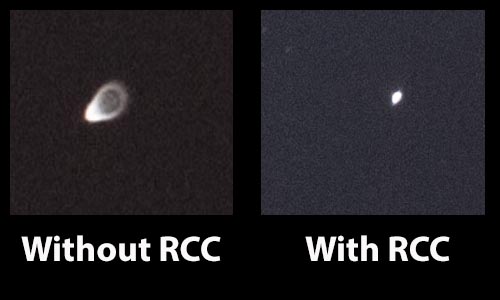Glossary |
Coma Aberation |
updated: 2024-04-20 |
From Wikipedia, the free encyclopedia
In optics (especially telescopes), the coma (/ˈkoʊmə/), or comatic aberration, in an optical system refers to aberration inherent to certain optical designs or due to imperfection in the lens or other components that results in off-axis point sources such as stars appearing distorted, appearing to have a tail (coma) like a comet. Specifically, coma is defined as a variation in magnification over the entrance pupil. In refractive or diffractive optical systems, especially those imaging a wide spectral range, coma can be a function of wavelength, in which case it is a form of chromatic aberration.
Schemes to reduce coma without introducing spherical aberration include Schmidt, Maksutov, ACF and Ritchey–Chrétien optical systems. Correction lenses, "coma correctors" for Newtonian reflectors have been designed which reduce coma in newtonian telescopes. These work by means of a dual lens system of a plano-convex and a plano-concave lens fitted into an eyepiece adapter which superficially resembles a Barlow lens.[1][2]

By Rawastrodata - Took the photos and edited in photoshop.Previously published:
See also:
- Spherical Aberration
- How to Remove Coma Aberration From Your Astro Images - MilkyWayPhotographers.com
- A Practical Guide to Lens Aberrations and the Lonely Speck Aberration Test – Lonely Speck
- Removing aberration in Photohop: https://www.youtube.com/watch?v=YuEX3KLrAUo&feature=youtu.be
Created with the Personal Edition of HelpNDoc: HelpNDoc's Project Analyzer: Incredible documentation assistant
